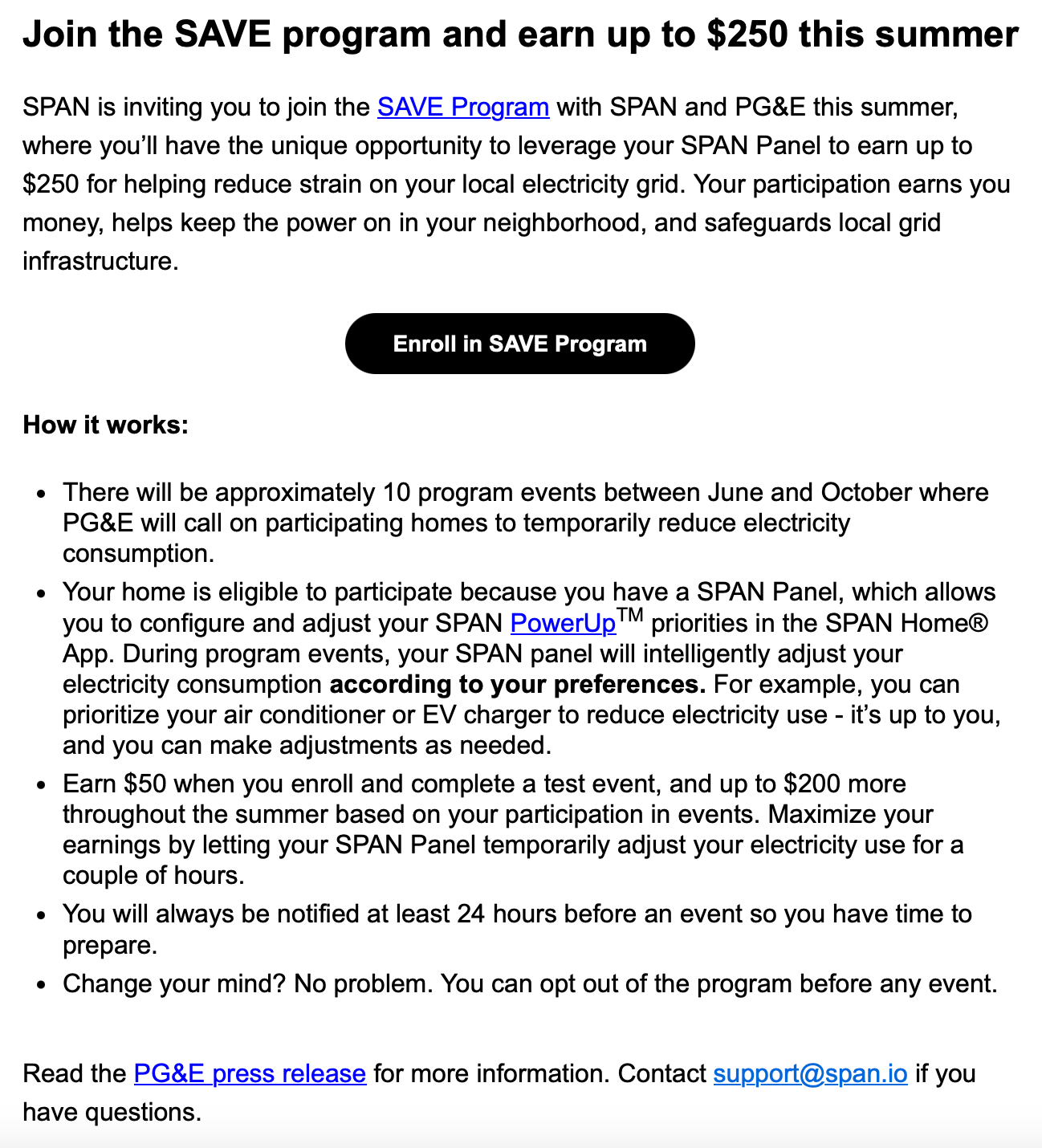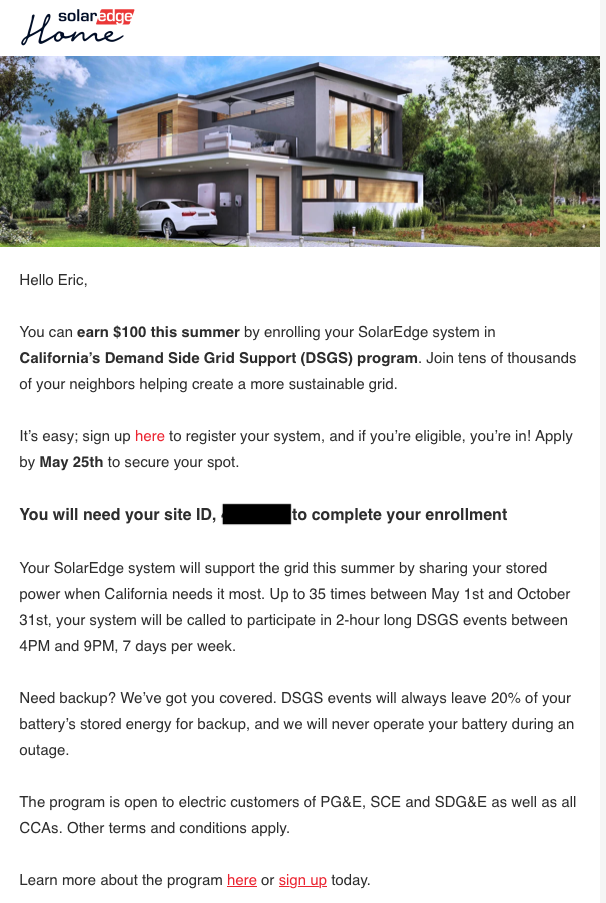Virtual Power Plant (VPP) trials in the SF Bay Area
Joining the “Smart Grid” through VPPs and Demand Response

I’ve been invited to participate in two “Virtual Power Plant” programs here in the Bay Area through PG&E - one with Span, and one with SolarEdge - and wanted to share the details and see what others think.
Relatedly, I listened to a panel of experts at SF Climate Week try to define what a VPP is, as if asked to explain it to their neighbor. It turned out to be a challenging ask by the moderator, as most panelists described it in pretty technical, industry-insider ways.
So what exactly is a VPP, or Virtual Power Plant?
According to ChatGPT -
A Virtual Power Plant (VPP) is a digitally connected network of decentralized energy devices—such as rooftop solar panels, home battery systems, electric vehicles (EVs), smart thermostats, and connected appliances—that can be coordinated and managed collectively. These devices operate independently at individual homes or buildings but work together through software to provide grid-level services.
Rather than relying solely on large, centralized power plants, VPPs harness the combined power of these local assets to deliver energy where and when it's needed.
Not bad, pretty easy to understand. By coordinating the power from thousands of homes with batteries and solar panels you can have the same impact as a traditional power plant. Yang Su of Sunrun at the above panel mentioned their CalReady program has 16,000 customers enrolled, with 58 Megawatts online.
Interestingly, programs like this could become more relevant soon, as there is some recently introduced legislation in California - AB 740 - that seeks to create a statewide strategy for the deployment of VPP’s at scale.
I also think of “Demand Response” programs as related to this. In 2022, the California Governor’s office issued a statewide text message alert asking people to “conserve energy now to protect public health and safety” - which averted rolling blackouts in the state. This was a centralized action that allowed independent devices to be controlled at a massive scale, albeit with people taking manual actions, to reduce enough energy use to maintain the electrical grid without blackouts. Automatic demand response programs were originally introduced back in the 1970’s in response to the energy crisis, and typically involved hardwired devices connected to AC units that could be used to pause consumers' air conditioning when the electric grid was stressed. OhmConnect, now merged with Nest Renew as Renew Home, sought to combine the two, with manual events shared via app and text messages and home automation with thermostats and smart plugs.
Benefits of Virtual Power Plants
To the consumer, VPP’s are potentially beneficial in the following ways:
- Lower Bills: You can save money by using less electricity from the grid when it's most expensive (by using your battery). In addition, it can offset the need for utilities to build high-demand “peaker plants” - new power plants that only run 5-10% of the time when demand is highest, resulting in less expense on the grid.
- Get Paid to Help the Grid: When you reduce usage or share stored energy during peak times, utilities may reward you with bill credits or direct payments. Interestingly, Collin Smith of Leap mentioned in the above panel that end users in California cannot be compensated for battery discharges back to the grid - but it sounded like this is changing soon.
Bay Area VPP Programs - and limitations
Today, there are some specific limitations that exist with VPPs in this area. In particular, as I learned from the above VPP panel, the residential smart meter is used to measure the performance of the system participating, and only one device can be linked to the meter at a time - which means I can’t participate in both the Span and SolarEdge programs, I have to pick just one. So here’s the details of each:
Span VPP program
Span calls their program PG&E’s SAVE program - and offers up to $250 for participating in 10 events with the SPAN panel installed in my home called on to reduce electricity usage:

SolarEdge VPP program
SolarEdge calls their program California’s Demand Side Grid Support (DSGS) program - and offers $100 for participation in up to 35 events, with my battery:

VPP Programs, My Questions and Thoughts
What I found interesting, the PG&E gentleman on the VPP panel above brushed aside the debates and discussions about the monetary/compensation parts of these trials, and emphasized the need to just get going - but it’s pretty clear to me that if I can only pick one, I should pick the SPAN trial - as it pays 2.5X more for less than 1/3 of the events! So clearly the compensation scheme will matter here.
Second, since I have an integrated system between the Span panel and the SolarEdge system and battery, it’s unclear to me if Span will be attempting to use the battery as part of their test, or if they’ll just be shutting down circuits. If it’s the latter, that seems far less useful than making full use of the battery as well.
Has anyone else been involved in VPP trials?
